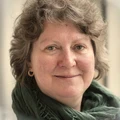
Sandra Catherine Chapman
- 2024
- Hannes Alfvén Medal
The 2024 Hannes Alfvén Medal is awarded to Sandra Catherine Chapman for her pioneering work and leadership in advancing our understanding of space plasma physics in the solar system and beyond.

European Geosciences Union
Division on Solar-Terrestrial Sciences
President: Emilia Kilpua
(st@egu.eu)
Deputy President: Olga Malandraki
(omaland@astro.noa.gr)
The Division on Solar-Terrestrial Sciences (ST) considers all aspects of solar and heliospheric physics, specifically the solar-terrestrial connection. It covers the physical processes occurring on the Sun, in the solar wind, as well as in Earth’s magnetosphere and ionosphere. Solar activity (e.g. coronal mass ejections, solar flares, solar energetic particle events) and the response of the near-Earth space environment to these solar phenomena are studied on a wide-range of temporal and spatial scales. Data analysis and interpretation of space-borne and ground-based data, as well as theoretical studies and different modelling techniques are used to better our understanding of how our local star defines the neighbourhood that we live in.

The 2024 Hannes Alfvén Medal is awarded to Sandra Catherine Chapman for her pioneering work and leadership in advancing our understanding of space plasma physics in the solar system and beyond.
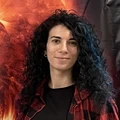
The 2024 Division Outstanding Early Career Scientist Award is awarded to Erika Palmerio for outstanding research in analysing complex solar transients and their space weather effects.
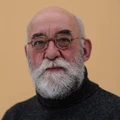
The 2023 Julius Bartels Medal is awarded to Hermann Opgenoorth for his exceptional contributions to substorms and space weather research, and his strong leadership in international collaboration.

The 2023 Division Outstanding Early Career Scientist Award is awarded to Stephan G. Heinemann in recognition of his outstanding research in the field of solar terrestrial relations and solar physics.

The 2023 Outstanding Student and PhD candidate Presentation (OSPP) Award is awarded to Artem Smirnov Neural network model of Electron density in the Topside ionosphere (NET)
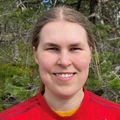
The 2023 Outstanding Student and PhD candidate Presentation (OSPP) Award is awarded to Veera Juntunen Influence of geomagnetic activity on the wintertime electricity consumption in Finland via Northern Annular Mode
Hi, this is your ST-ECS team 2023-2024. We are a group of Early Career Scientists (ECSs) of the Solar-Terrestrial (ST) division, and we organize events and activities with and for ST-ECS, both during the EGU General Assembly and throughout the year. Our aim is to increase the visibility of ECSs and provide you with opportunities for networking. Dr. Liliana Macotela, ECS Representative Liliana is a Marie Curie Fellow at the University of Bath, UK. Her research focuses on studying the …
The EGU General Assembly is around the corner, and we would like to advertise the events the Early-Career Scientist (ECS) Team of our Division have been preparing to create networking opportunities for ECSs. Solar-Terrestrial ECS Drinks: preGA Icebreaker Get-together for all ST ECSs before the opening reception. We’re meeting up at 15:00 hours in front of the entrance of the name badges collection area. From there and if the weather allows, we move to Copa Beach (near the venue). Later …
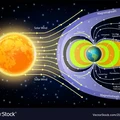
Particle Precipitation High energy particles (e.g. electrons and protons) that precipitate at high latitudes can alter the chemical composition of the atmosphere by different photochemical reactions. This mainly happens due to primary collision processes and subsequent ion and neutral-chemistry reactions. Such reactions ordered by increasing energy are, for example, excitation, photo-dissociation, photo-ionization and dissociative ionization. These particles can come from various sources in outer space, accelerated by different processes to varied energies, and they affect different altitude ranges of the …
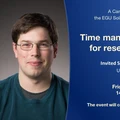
Life in academia can be complex, involving handling multiple roles while developing and sustaining a successful career. Therefore, it can be challenging to balance research responsibilities with other commitments. Understandably, effective time management is essential for researchers to be productive and to achieve their goals, without sacrificing other important matters in life. The Early Career Scientists (ECS) team of the Solar-Terrestrial (ST) division of the European Geophysical Union (EGU) is organizing a campfire event to discuss this matter. In this …
In our March Issue, we are getting ready to make new connections at EGU24 which will be starting in just over two weeks! Learn about how find your personal collection of science interests and make the most of our biggest hybrid General Assembly yet!
Get all the insider tips form EGU’s Events Manager Jane Roussak as well as many othe guides and helpful articles on the EGUblogs, watch our recorded EGUwebinar on navigating the General Assembly with our Early Career Scientists and if you are a convener, don’t miss our EGUwebinar on 2 April that will help you be fully prepared for your session.